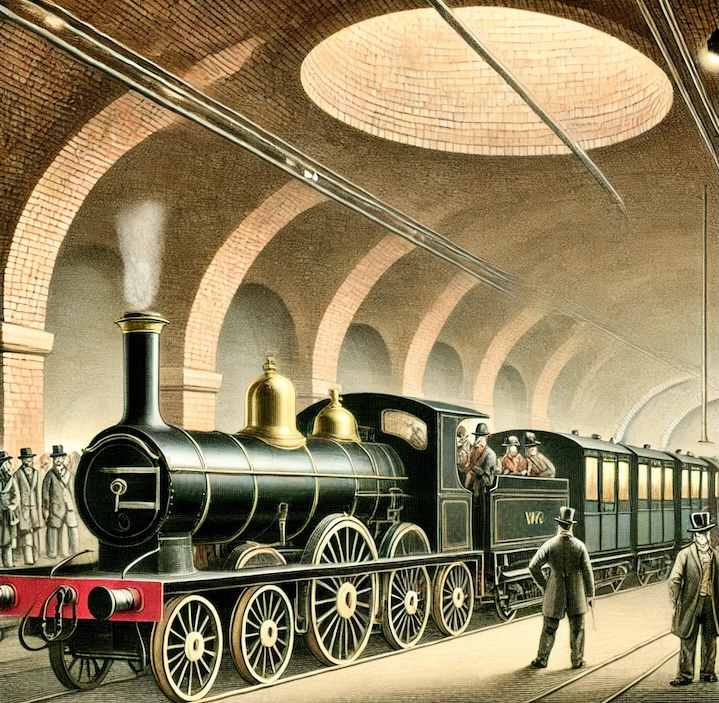1860 Work Begun on London Underground Railroad

Work on London's Underground Railroad was begun in 1860. The railroad was electrified in 1900..
The history of London’s Underground, often known as the “Tube,” is a fascinating tale of engineering innovation and urban transformation. The first steps toward creating this groundbreaking transit system were taken in 1860 when construction began on the world’s first underground railway. The initial purpose of the Underground was to alleviate congestion on London’s streets, which were increasingly clogged with horse-drawn carriages and other vehicles as the city rapidly grew during the Industrial Revolution. Designed to connect the city’s central business district with the residential suburbs, the Underground would revolutionize urban commuting and set a global precedent for public transportation.
The Metropolitan Railway, as it was originally called, opened to the public on January 10, 1863. This initial stretch ran between Paddington and Farringdon Street, covering about four miles. The trains were initially powered by steam engines, a remarkable feat considering the challenges of running such engines in confined underground spaces. The tunnels, built just below street level, were prone to heat, smoke, and pollution, making early rides uncomfortable. However, the success of this first line demonstrated the potential of the Underground, and soon other lines were being planned and constructed to link various parts of the city.
The expansion of the Underground continued over the next few decades, with additional lines and extensions being added to cover more areas of London. The network’s popularity and the city’s relentless growth highlighted the need for a more efficient, less polluting power source for the trains. By the end of the 19th century, advancements in electricity opened up new possibilities for the Tube. In 1890, the City and South London Railway became the first deep-level electric railway line, a move that paved the way for the full electrification of the Underground. This shift to electric trains solved many of the problems associated with steam engines, such as smoke and ventilation issues, and allowed for deeper tunnels that didn’t interfere with existing infrastructure on the surface.
By 1900, most of the London Underground had been electrified, marking a major turning point in its history. This modernization allowed for faster, quieter, and cleaner operations, and it drastically improved the experience for commuters. With electrification, the Underground could expand even further, adding more lines, longer tunnels, and increased efficiency. Electrification was also accompanied by improvements in signaling and safety systems, which made it possible to run trains more frequently and at higher speeds. This meant that more passengers could be transported across the city each day, making the Tube an essential part of daily life for Londoners.
As London’s Underground expanded and evolved, it became more than just a mode of transportation—it became a symbol of the city itself. The development of the iconic Tube map by Harry Beck in 1931, the introduction of the roundel logo, and the architectural style of stations designed by Charles Holden all contributed to making the London Underground a globally recognized cultural icon. The Tube has continued to grow and modernize over the years, now stretching over 250 miles and serving millions of passengers every day.
 >
>